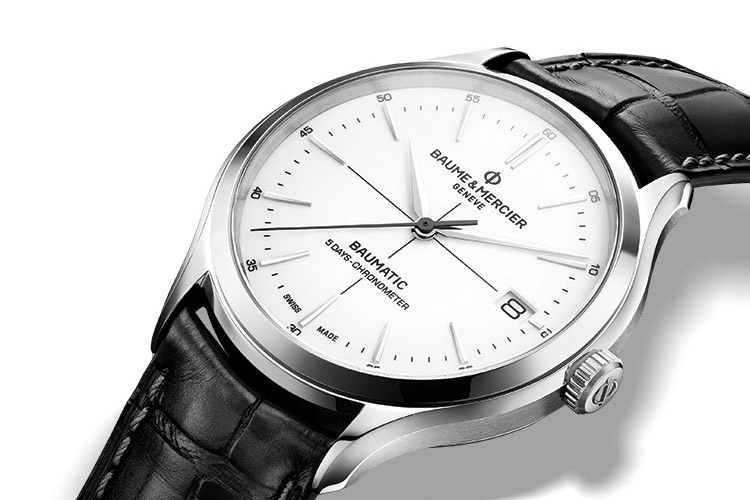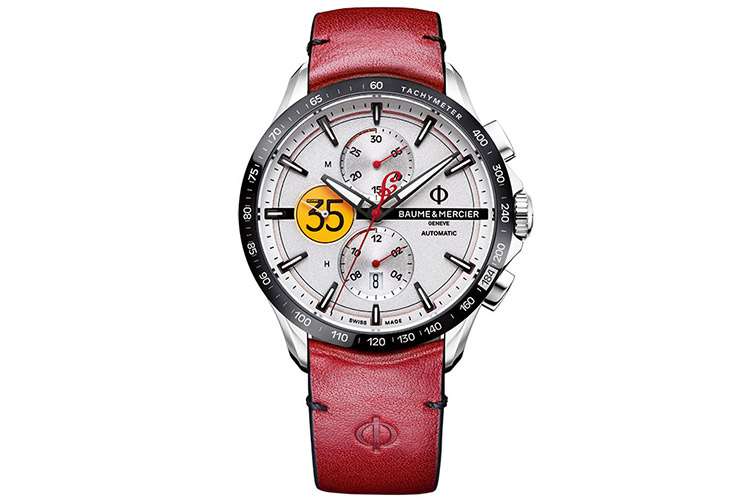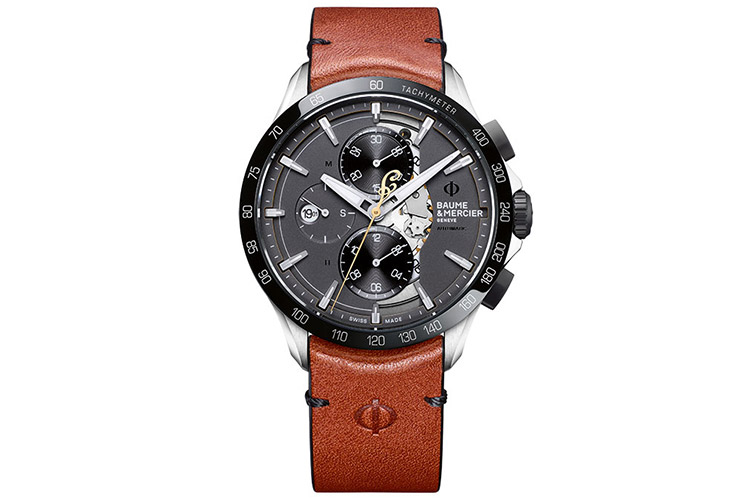Baume & Mercier to focus on brand DNA

A watchmaking brand that was born in 1918, Baume & Mercier, during the Roaring Twenties and throughout the Art Deco period, established its style and left an indelible mark on watch design. Less well-known in recent years, the marque is all set to come back in style. Edouard Achken – Brand Director for Baume & Mercier in the Middle East – speaks to us
How did the idea for the Clifton Club Indian collection that you unveiled last year come about?
Baume & Mercier has traditionally and historically tied up with sports, so we had a tie-up with an automotive and brought out the Cobra series. This tie-up is now five years old, during which we have launched numerous editions of the Cobra. This is still on-going, but the focus is less. Meanwhile, to continue our sport partnerships, we came up with the tie-up with the Indian, the fastest growing motorcycle company in the world. It is a brand that is not too fancy or extravagant. It is sober in design, but has the heritage and craftsmanship that matches the Baume & Mercier brand.

Why did you launch the Baumatic movement?
Baume & Mercier is the 7th oldest watchmaking brand in the world, but in the last ten years, we lost our focus a bit in terms of product, as the brand was trying to find itself. We launched many watches and many designs, but were straying from the brand DNA. We needed to re-establish the brand as a traditional watchmaker and showcase our technical heritage and knowledge. To show the know-how of the brand, we researched for four years on a new technology based on silicon and we came up with the Baumatic movement. This showed the industry and our clients that we are capable of creating our own in-house movement.
The Baumatic movement will be the core and the milestone of our brand, as we will be using it more and more for complications. We will be adding complications to the Baumatic as it is a base movement. We have already done a Perpetual Calendar on it; we will also have a Moon phase Baumatic movement, a Retrograde Baumatic movement, and so on. We plan to have many more complications on the Baumatic movement.

Won’t an in-house movement increase the price point for watches?
Actually no; if you look at it, we have decreased the prices for our watches. The Baumatic has a 5-day power reserve and is anti-magnetic. It requires servicing only every 5 years, while the Swiss industry average is 2-3 years, and the Baumatic is priced around CHF3,240, which is extremely low. If you look at other brands, a watch with this kind of specifications is usually priced around CHF 10,000-11,000. So, it is a very affordable price for the quality. The new Baumatic that we have launched in September 2018 has a Baumatic-derived movement; we changed one component of the movement and we call it BM13, and this is even more affordable as it is priced at around CHF3,000.
Why did you make a Perpetual Calendar now?
Our Perpetual Calendar is the most affordable in the market; it is priced at around CHF23,000. We did it because we wanted to show the industry that we are capable of creating beautiful watches with intricate complications, in rose gold. This is not the core range or core collection of Baume & Mercier, we are producing only 10-20 pieces a year. We are not aiming to be at that price range; we are just producing these watches for collectors.
Why did you unveil a Baumatic COSC, when it is mostly for connoisseurs?
We did a COSC for two reasons; the first is that we wanted to show that the Baumatic watch could be COSC-certified. It answers all the requirements needed for a COSC certification. The second reason is that Japan, and most of the Asian market, is very keen on technical specifications. They are not bothered about actual details but place emphasis on reliability and precision, and they are very keen on COSC certification.
Interestingly, we used the COSC in our communications. The design of the COSC watch is a bit different, and the market loved it. Many people are asking for it, especially because the difference in cost is negligible.

Can you tell us more about the direction Baume & Mercier is headed to?
Baume & Mercier will get closer and closer to its heritage, its brand DNA. Within a couple of years, we may have new editions of some of our oldest watches. Some of Baume & Mercier’s iconic watches from 20-30 years ago will be issued in new editions soon. The idea is to go with Classima and Clifton as core collections; all other collections will, within the next year, be re-designed or phased out. Clifton and Classima will be the focus of the brand.
What is your plan for the brand in the Middle East? What do you think are the brand’s strengths and weaknesses in the region?
I would prefer to speak of challenges rather than weaknesses in the Middle East; we are not well-known in the Middle East. We know this; we are a brand that is very famous in Europe, the US, and in Lebanon. In Lebanon, it is because of the strong cultural Francophile ties in the region. It was a French colony and so people know the brand. But in a market like the GCC, we are less famous. Also, the positioning of the brand as affordable luxury might be less appealing for these countries. That has been a challenge for us and that is why we are trying to build awareness of the brand here. We have to start from the scratch here.
The other challenge is to be more consistent. We are not very consistent in our communications worldwide. In one country, we are sponsoring horses, in another automotives, and football in yet another country, and fashion-forward events in one other. There has been a lack of consistency and now the aim of the brand is to re-centralise the marketing and communications of the brand from the HQ and operate it from there. So, it will be one voice, one type of event, and one communication.
Are you planning to open more boutiques in the Middle East?
We have four boutiques in the region; I don’t want expand retail further because I think we should maximise what we have. Make a huge success of what we do have; accentuate the retail where we are still learning, and then expand in other countries. We have just one boutique in Paris, the others are in the Middle East. For the present, rather than open more boutiques, we would open more points of sales.
How is your ladies’ segment doing?
Around 75 per cent of our focus was on men and only 25 per cent of our products were for ladies. We know that in the ladies’ segment, we have not brought anything new for a while now. We have the Linea, but it almost dying. We launched Classima for the ladies a few years ago, but the size was not appealing to the customers. This year we have come up with new sizes and dimensions for the Classima, which we are hoping will appeal to many of our markets. For the Middle East, we hope to have a new completely revamped ladies’ collection.






